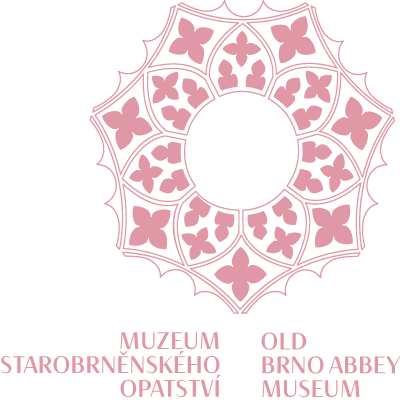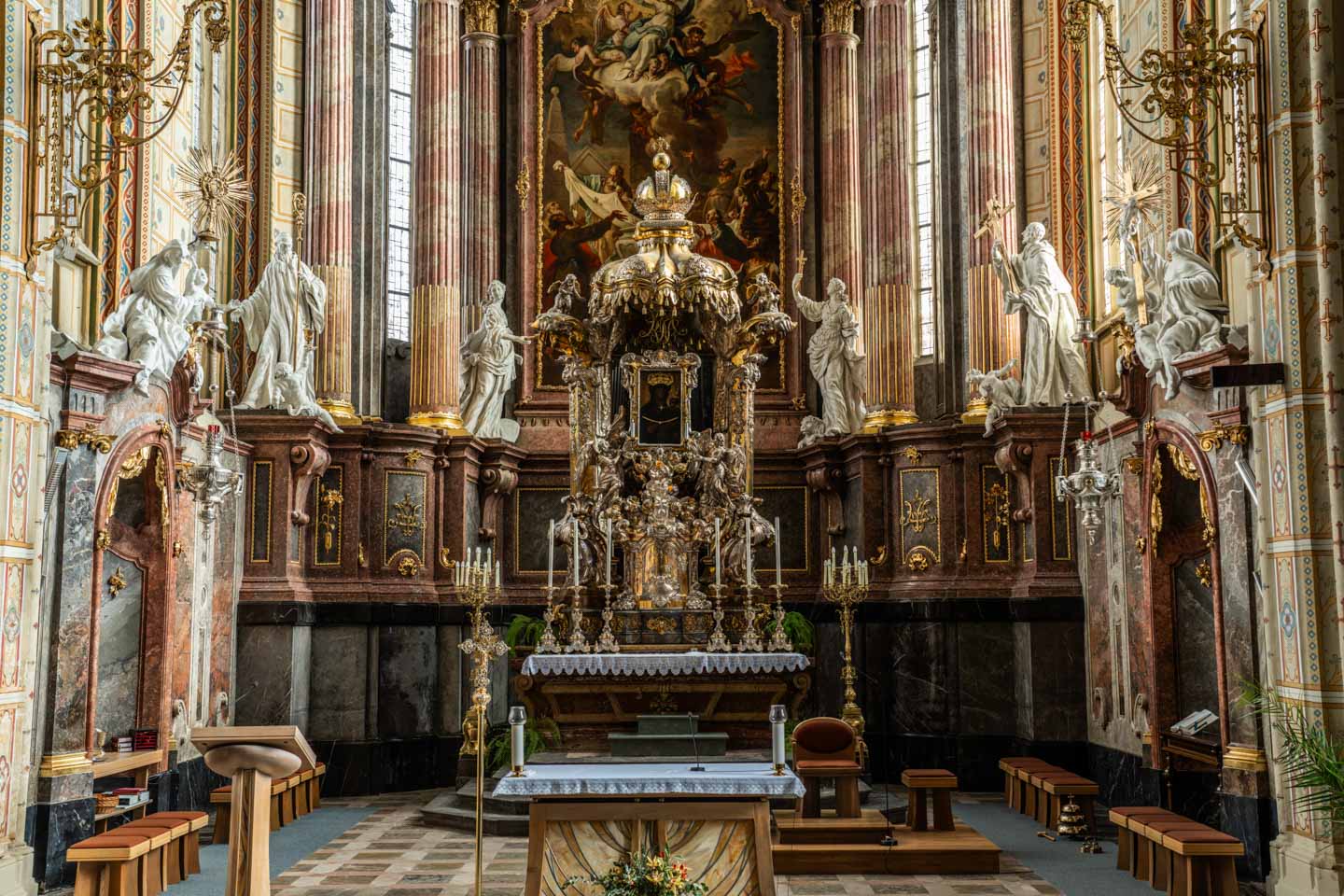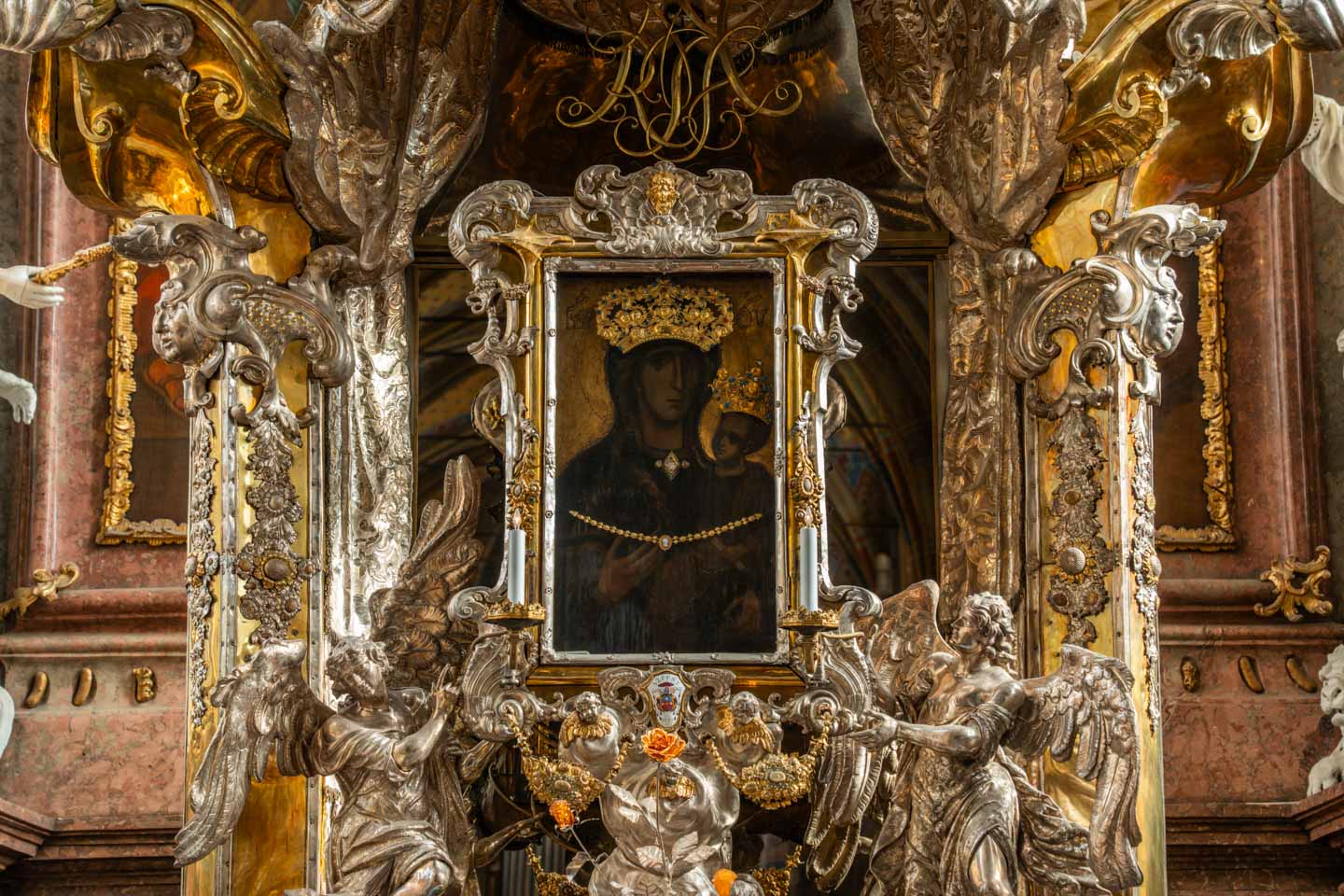Madonna of St. Thomas and the Silver Altar
The love painting of the Madonna of St. Thomas, also called the Palladium of Brno, the Moravian Palladium, Thaumaturga, Madonna of St. Brno, Gemma Moraviae, is considered the oldest panel painting in the Czech lands. The ancient, probably early Gothic icon is modelled on the Hodegetria. The semi-figure of the Mother of God is dressed in a dark good cloak, her head is covered by a maforium decorated with golden stripes and equilateral golden crosses. The reliquary, in the form of a pin, is provided with a parchment descriptive band. With a gesture of his hand, he simultaneously protects and offers the child, while at the same time referring to his future victim. Jesus, depicted as a grown child, blesses with his right hand. And in his left hand he clutches a scroll symbolizing the law (logos). The subject of the painting cannot be precisely identified. The St. Thomas Madonna probably dates back to the first or second third of the 13th century. The scene is executed in tempera on a chalk ground, which was gilded and the halo engraved, and on a wooden panel (poplar, lime tree) It was originally intended for the Augustinian monastery of the Eremites at St. Thomas, founded by Margrave John Henry of Luxembourg, younger brother of Charles IV, as a burial place for the Moravian secondary family.
On the occasion of the coronation of the image of the Virgin. Mary, which became an exceptional event in the whole monarchy, the Augustinians had a retable made for the Madonna’s image in the famous Augsburg goldsmith’s workshop. The architectural concept came from Christian Rudolph, but the actual realisation was probably entrusted to Johann Georg Herkommer. The altar travelled to Brno from Augsburg and was erected in the purpose-built Marian chapel in the Church of St. Thomas. The angel figures are probably the work of the Brno sculptor Jan Jiří Schauberger. Other decorative elements were added during cleaning in 1776 by silversmith František Richter. According to the contract of 4 October 1734, the work should have been completed on 1 September 1735. The altar is made of copper sheet, on which gold and silver leaf was applied. The cartouches of the candlesticks bear the initials of Prior Ondřej Zirkl, who was also the spiritus agens of the whole work. After the convent of the Augustinian Eremites was moved from St. Thomas to Old Brno (1783), the altar was also moved, which then became the main sanctuary of the Basilica of the Assumption of the Virgin Mary.


